Home Tech
The Guardian of Your Threshold: An In-Depth Review of the Google Nest Doorbell
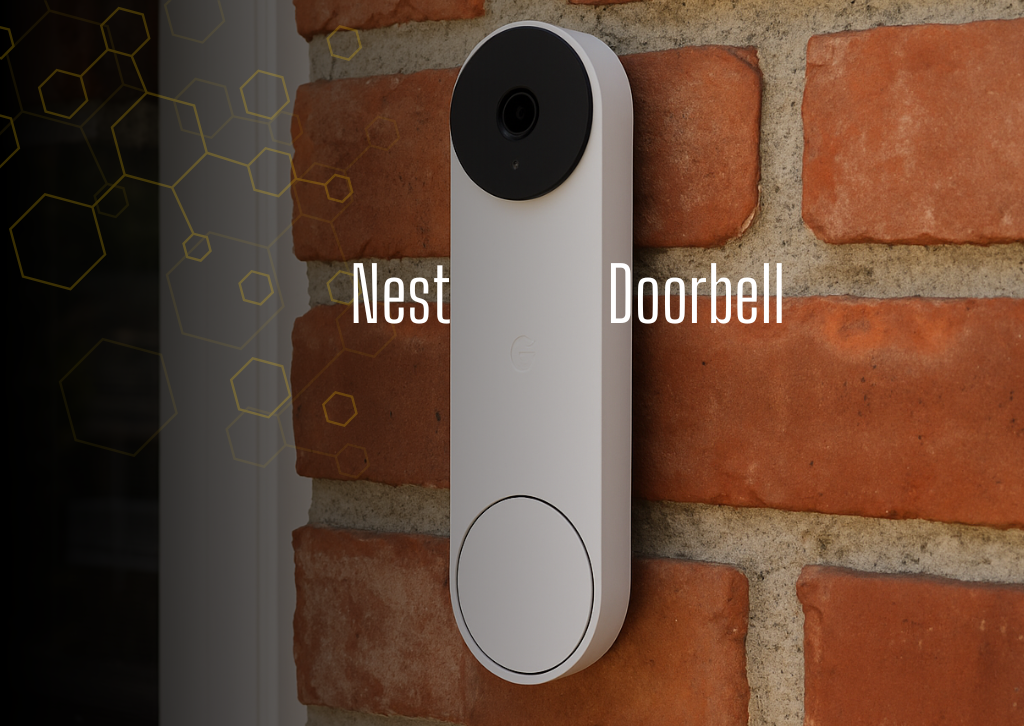
In the ever-evolving landscape of smart home technology, the doorbell has transcended its humble origins to become a sophisticated security and communication hub. Leading this transformation is the Google Nest Doorbell, a device designed to offer peace of mind and seamless connectivity to your home’s entrance. Available in both battery-powered and wired options, the Nest Doorbell aims to cater to a diverse range of homes and installation preferences. This in-depth review will delve into its software capabilities, hardware distinctions, pricing structure, and overall performance, helping you determine if it’s the right choice for your smart home ecosystem.
Software: The Brains Behind the Bell
At the core of the Nest Doorbell’s intelligence lies its robust software, managed primarily through the Google Home app. Unlike older Nest products, the latest Nest Doorbells (both battery and 2nd Gen wired) are designed to integrate exclusively with the Google Home app, offering a centralized control point for your entire smart home.
One of the most praised aspects of the Nest Doorbell’s software is its intelligent alerts. Leveraging on-device machine learning, the doorbell can accurately differentiate between people, animals, vehicles, and even packages. This significantly reduces false alarms, ensuring you’re only notified about events that truly matter. For instance, you’ll receive a distinct alert when a delivery driver leaves a package, or when a person approaches your door, rather than a generic motion detection notification triggered by a passing car.
Beyond basic alerts, the Nest Doorbell offers a suite of features designed to enhance communication and convenience:
- Two-Way Audio with Noise Cancellation: Engage in clear conversations with visitors from anywhere using your smartphone. The noise cancellation ensures that background distractions are minimized, making communication crisp and understandable.
- Quick Responses: For times when you’re unable to speak, or prefer a pre-recorded message, the Nest Doorbell provides quick response options like “You can leave it” or “We’ll be right there.”
- Visitor Announcements: If you have Google Assistant-enabled speakers or displays (like a Nest Hub), they can announce when someone rings the doorbell, even by name if you have a Nest Aware subscription with Familiar Faces enabled.
- Activity History: The doorbell includes 3 hours of event video history free of charge, allowing you to review past interactions. This is a significant advantage over many competitors that offer no free cloud storage.
- Home/Away Assist and Scheduling: The doorbell can intelligently adjust its behavior based on whether you’re home or away, turning on or off its camera as needed. You can also set custom schedules for its operation.
- Night Vision and HDR: To ensure clear video day and night, the Nest Doorbell incorporates High Dynamic Range (HDR) for handling bright, high-contrast lighting conditions and infrared night vision for visibility up to 10 feet in low light or darkness.
For those seeking more advanced functionalities, Google offers Nest Aware subscription plans. These unlock features like 30 or 60 days of event video history, and crucially, Familiar Faces alerts, which allow the doorbell to recognize specific individuals and notify you by name. This adds a personalized layer to your home security, letting you know exactly who is at your door.
Battery vs. Wired: Choosing Your Power Source

Google offers two primary versions of the Nest Doorbell, providing flexibility in installation: the battery-powered Nest Doorbell and the wired Nest Doorbell (2nd Generation). While they share many core functionalities and a similar aesthetic, their power sources dictate key differences in features and installation.
Nest Doorbell (Battery)
- Installation: This is the ideal choice for renters or homes without existing doorbell wiring. Its wire-free design makes installation remarkably easy; simply mount it to your wall and connect to your home Wi-Fi.
- Power: It operates on a built-in, rechargeable battery. While designed for convenience, it does require periodic recharging. Google states that with average use (13-16 recorded events per day), the battery can last around 2.5 months. If connected to existing doorbell wires, it can receive a trickle charge, but to prolong battery life, it will only charge to 80% via this method. In extremely cold climates (below 32°F/0°C), the battery may struggle to charge and might need to be brought indoors.
- Continuous Recording: A notable limitation of the battery version is its inability to offer 24/7 continuous video recording, even with a Nest Aware Plus subscription. This is due to battery conservation. It primarily records events.
- Power Outage Functionality: A significant advantage is its ability to continue operating and recording important events to local memory for up to one hour even if your Wi-Fi or power goes out, uploading the footage once the connection is restored.
- Dimensions: Slightly larger than its wired counterpart to accommodate the internal battery.
Nest Doorbell (Wired, 2nd Generation)
- Installation: This version connects to your existing doorbell wiring (requiring a 16-24V AC transformer). While manageable for DIY enthusiasts, professional installation might be preferred for those less comfortable with electrical work.
- Power: Enjoy continuous power without the need for recharging, offering true “set it and forget it” operation.
- Continuous Recording: With a Nest Aware Plus subscription, the wired version unlocks the highly sought-after feature of 24/7 continuous video history, allowing you to review every moment captured by the doorbell.
- Legacy “Nest Hello” (Wired, 1st Gen): It’s important to note the distinction from the older “Nest Hello” wired doorbell. While the 2nd Gen wired Nest Doorbell shares the 960×1280 resolution and 145° field of view with the battery model, the original Nest Hello boasted a higher 1600×1200 resolution and a wider 160° field of view. If continuous 24/7 recording is a priority and you have existing wiring, the 2nd Gen wired Nest Doorbell is the current offering for that capability.
- Dimensions: More compact due to the absence of a large internal battery.
Both versions integrate seamlessly with the Google Home app and offer the same intelligent alerts and two-way audio. The choice between battery and wired ultimately comes down to your home’s existing infrastructure and your preference for continuous recording versus installation flexibility.

Pricing: Understanding the Investment
The Google Nest Doorbell is competitively priced within the smart doorbell market. Both the battery-powered and the wired (2nd Gen) versions typically retail for $179.99. It’s worth noting that sale prices can sometimes bring this down to around $119.99, so it’s advisable to look out for deals.
Beyond the initial hardware cost, potential long-term expenses primarily revolve around Nest Aware subscriptions, which unlock the doorbell’s full potential:
- Nest Aware: Priced at $8 per month (or $80 per year, saving $16 annually), this subscription provides:
- 30 days of event video history.
- Familiar Faces alerts.
- Activity Zones for more precise motion detection.
- The ability to create and share video clips.
- Nest Aware Plus: For more extensive video history, this plan costs $15 per month (or $150 per year, saving $30 annually) and includes:
- 60 days of event video history.
- 10 days of 24/7 continuous video recording (exclusive to wired Nest Doorbell models).
- All features of the standard Nest Aware plan.
While the free 3 hours of event history is a commendable offering, most users will find a Nest Aware subscription beneficial for enhanced security and convenience, particularly for features like Familiar Faces and extended video history. Compared to some competitors, Google’s pricing for subscriptions is reasonable, especially considering the advanced AI capabilities.
Specifications and Features: A Closer Look at the Hardware
The Nest Doorbell is packed with technical specifications and features that contribute to its performance and user experience.
Common Specifications (Battery & Wired 2nd Gen):
- Camera: 1/3-inch, 1.3-megapixel color sensor.
- Video Resolution: HD 960 x 1280 pixels at up to 30 frames per second (FPS). While not 2K or 4K, the 3:4 aspect ratio is a significant advantage, providing a taller field of view that allows you to see visitors head-to-toe and packages placed on the ground, a common blind spot for wider 16:9 aspect ratio cameras.
- Field of View: 145° diagonal.
- Zoom: 6x digital zoom.
- Video Enhancements: HDR (High Dynamic Range) for challenging lighting, and Night Vision with 850 nm infrared LEDs for clear low-light visibility.
- Audio: High-quality speaker and microphone for two-way audio with noise cancellation.
- Connectivity: Dual-band Wi-Fi (802.11a/b/g/n, 2.4 GHz and 5 GHz) for reliable connection, and Bluetooth Low Energy (BLE). Supports WEP, WPA, WPA2, and WPA3 encryption. A minimum upload speed of 2 Mbps per camera is recommended.
- Durability: Both newer models boast an IP54 weather resistance rating, meaning they are protected against dust ingress and splashing water, making them suitable for outdoor use.
- Design: Available in a range of colors including Snow, Linen, Ivy, and Ash, allowing for aesthetic integration with various home exteriors.
- Integration: Works seamlessly with Google Assistant and Amazon Alexa, allowing voice control and display of live feeds on compatible smart displays (like Nest Hubs).
Unique Sensor (Battery-Powered):
- PIR (Passive Infrared) Sensor: The battery-powered Nest Doorbell includes a PIR sensor for motion and proximity detection, contributing to its energy efficiency by activating recording only when necessary.
- Magnetometer: Detects whether the doorbell is securely mounted, providing tamper alerts.
Overall Performance and User Experience

Based on extensive testing and user feedback, the Google Nest Doorbell consistently delivers reliable performance. The intelligent alerts are highly accurate, and the distinction between people, packages, and other movements is a significant benefit, minimizing irrelevant notifications. The 3:4 aspect ratio is a standout feature, providing a truly comprehensive view of your doorstep.
The two-way audio is clear, and the quick responses are a convenient touch for busy moments. Integration with the Google Home ecosystem is fluid; displaying the live feed on a Nest Hub or receiving visitor announcements on a Nest Mini enhances the smart home experience considerably.
While the video resolution of 960×1280 isn’t the highest on the market, the HDR and night vision capabilities do a commendable job of producing clear, usable footage in various lighting conditions. For most doorbell camera use cases, this resolution is perfectly adequate for identifying individuals and packages.
The primary consideration for potential buyers will be the choice between battery and wired. For continuous, 24/7 recording and no battery maintenance, the wired option paired with Nest Aware Plus is the superior choice. However, for ease of installation and placement flexibility, the battery model is an excellent alternative, offering robust event-based recording and local storage during outages.
Conclusion
The Google Nest Doorbell stands as a strong contender in the smart video doorbell market, particularly for those already invested in the Google ecosystem. Its intelligent software, accurate alerts, thoughtful design, and dual power options make it a versatile and user-friendly device. While the wired version with a Nest Aware Plus subscription unlocks its full 24/7 recording potential, the battery option provides an accessible entry point for wire-free homes.
Before purchasing, consider your specific needs: Do you have existing doorbell wiring? Is 24/7 continuous recording a must-have, or are event-based recordings sufficient? Are you willing to pay for a Nest Aware subscription to unlock advanced features like Familiar Faces? By weighing these factors against the Nest Doorbell’s comprehensive feature set, you can confidently decide if this smart guardian is the right fit for your home.

Home Tech
BenQ HT2060 Projector: A Comprehensive In-Depth Review
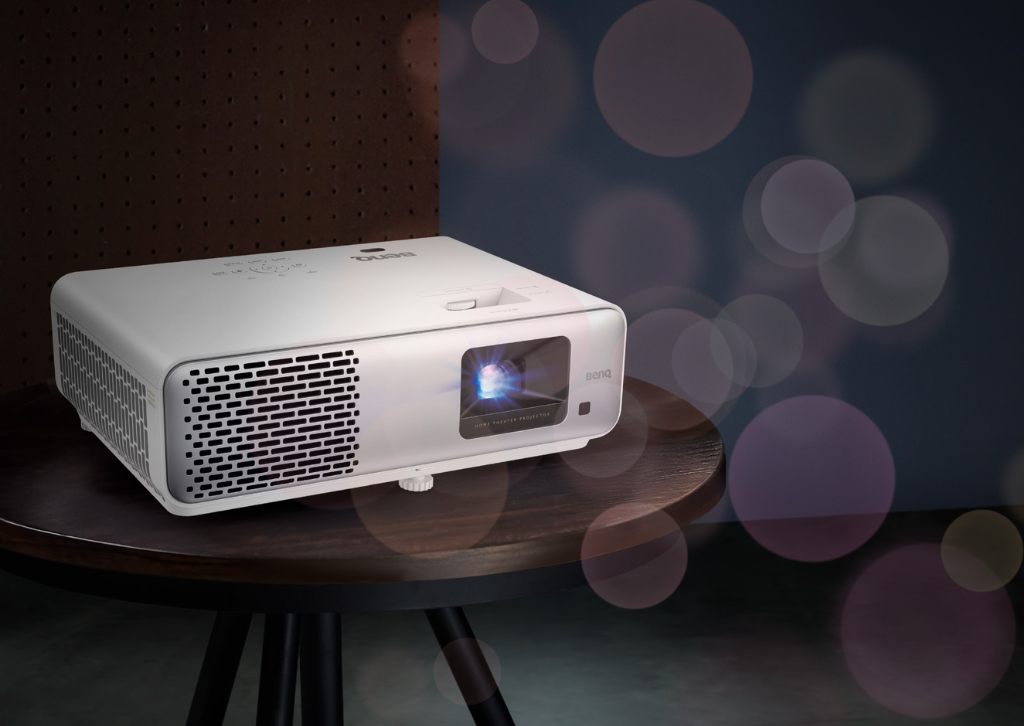
In the ever-evolving world of home entertainment, projectors have become an increasingly popular alternative to traditional televisions, offering the allure of a true cinematic experience in the comfort of your own home. The BenQ HT2060 positions itself as an entry-level home theater projector that promises to deliver impressive performance without demanding a premium price tag. After extensive evaluation, it’s clear that this projector represents a compelling option for those taking their first steps into the world of large-screen projection, though it comes with both notable strengths and limitations worth discussing in detail.
Design and Build Quality
The BenQ HT2060 sports a clean, professional aesthetic with its white chassis that should blend seamlessly into most home theater environments. The projector measures approximately 12.2 x 9.5 x 4.1 inches and weighs around 6.2 pounds, making it reasonably portable while still feeling substantial enough to inspire confidence in its build quality. The housing is constructed primarily from durable plastic with a matte finish that resists fingerprints and smudges effectively.
The top panel features a simple control interface with clearly labeled buttons, though you’ll likely rely on the included remote control for most operations. Speaking of the remote, it’s a straightforward infrared unit with a logical button layout that’s easy to navigate even in a darkened room. The buttons have good tactile feedback, and the remote includes dedicated shortcuts for picture modes and other commonly accessed settings.
One minor criticism on the design front is the lack of a built-in lens cover, which means you’ll need to be mindful of dust accumulation on the lens when the projector isn’t in use. This is a common omission at this price point, but it’s worth noting for those who prefer comprehensive protection for their equipment. The cooling vents are positioned strategically around the chassis to promote adequate airflow, though we’ll discuss fan noise in more detail later.
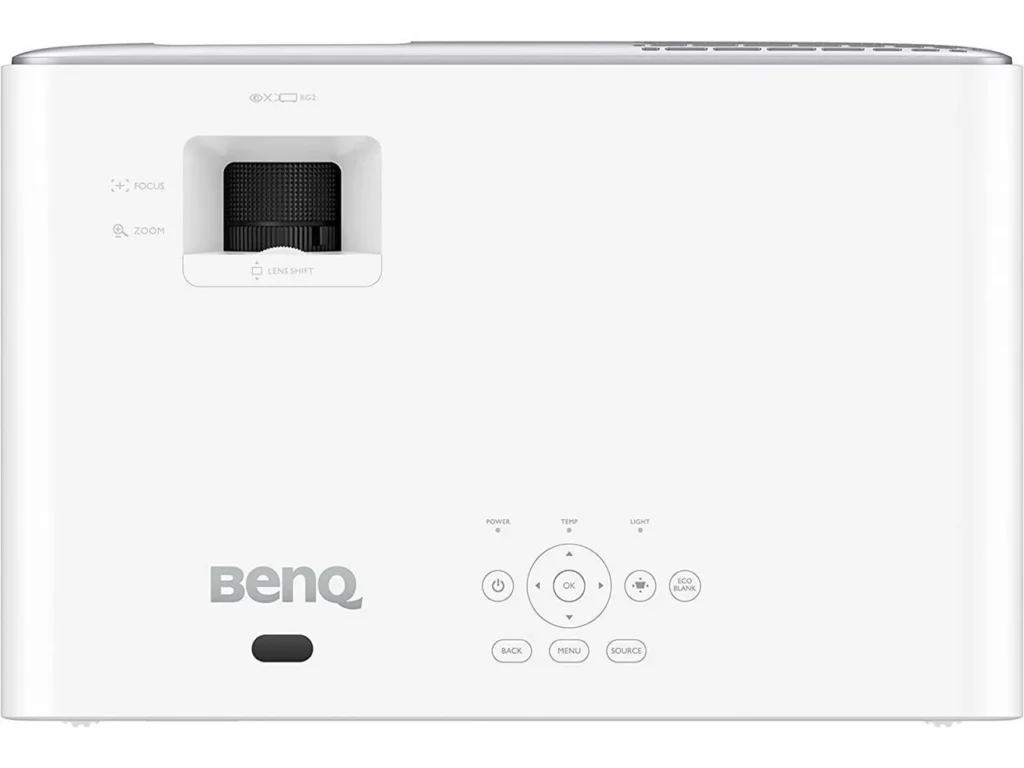
Picture Quality and Performance
The heart of any projector review lies in its image quality, and the HT2060 delivers admirably for its class. Utilizing DLP (Digital Light Processing) technology with a single 0.65-inch DMD chip, this projector produces Full HD resolution images at 1920×1080 pixels. While 4K projectors have become more common, Full HD remains perfectly suitable for most content, especially at the screen sizes typically used in home environments.
The brightness specification of 2200 ANSI lumens is genuinely impressive for a projector in this price range. This level of brightness means the HT2060 can deliver a watchable image even in rooms with some ambient light, though you’ll still get the best results in a properly darkened theater environment. During testing, the projector maintained good brightness uniformity across the entire image, with only minimal hotspotting in the center that’s barely noticeable during normal viewing.
Where the HT2060 truly shines is in its color reproduction. BenQ has equipped this projector with their CinematicColor technology, which they claim covers 96% of the Rec.709 color gamut. Rec.709 is the international standard for high-definition television, so achieving near-complete coverage means the projector can accurately reproduce the colors as content creators intended. In practice, this translates to vibrant, lifelike colors that pop off the screen without appearing oversaturated or artificial. Reds are rich and warm, blues are deep and nuanced, and skin tones appear natural across various lighting conditions.
The contrast ratio, specified at 15,000:1, is respectable though not exceptional. In real-world viewing, this means you’ll get decent black levels that allow for good shadow detail in darker scenes, though true blacks can appear more as dark grays when compared to higher-end projectors or OLED displays. This is a common limitation of single-chip DLP projectors at this price point, and the HT2060 performs about as well as can be expected given its technology and cost. Dark movie scenes remain watchable with acceptable detail in shadows, though serious videophiles might notice the lack of absolute black depth during particularly dark sequences.
One aspect worth discussing is the rainbow effect, a phenomenon sometimes associated with DLP projectors where sensitive viewers can perceive brief flashes of red, green, and blue colors, particularly during high-contrast scenes or rapid eye movements. The HT2060 uses a standard color wheel speed, and while some viewers may occasionally notice rainbow artifacts, most people find them either non-existent or minimally distracting. If you’ve successfully watched DLP projectors in the past without issues, you’ll likely have no problems with the HT2060.
Setup and Installation Flexibility
One of the most practical considerations when choosing a projector is how easy it is to set up and how much flexibility you have in positioning it within your room. The HT2060 offers a reasonable throw ratio of 1.15-1.5:1 with its 1.3x zoom lens, which means you’ll need to position the projector approximately 10 to 13 feet away from the screen to achieve a 100-inch diagonal image. This provides decent flexibility for various room configurations, though it’s not as flexible as projectors with longer zoom ranges.
The projector includes vertical keystone correction of ±40 degrees, which allows you to digitally adjust the image if the projector isn’t perfectly perpendicular to the screen. However, it’s worth noting that keystone correction works by digitally manipulating the image, which can result in some loss of resolution and sharpness. Whenever possible, it’s preferable to position the projector at the correct angle and avoid relying on keystone correction for optimal image quality.
Manual focus and zoom adjustments are controlled by two clearly marked wheels on the top of the projector. While some users might prefer motorized adjustments found on premium models, the manual controls are smooth and precise, making it easy to dial in a perfectly sharp image. The focus uniformity is good across the entire screen, with only minor softness at the extreme corners that’s unlikely to be noticed during regular viewing.
The HT2060 can be ceiling-mounted or placed on a table, and it includes mounting points for standard ceiling brackets. The projector offers front and rear projection modes as well as ceiling mount options, all easily configured through the on-screen menu system.
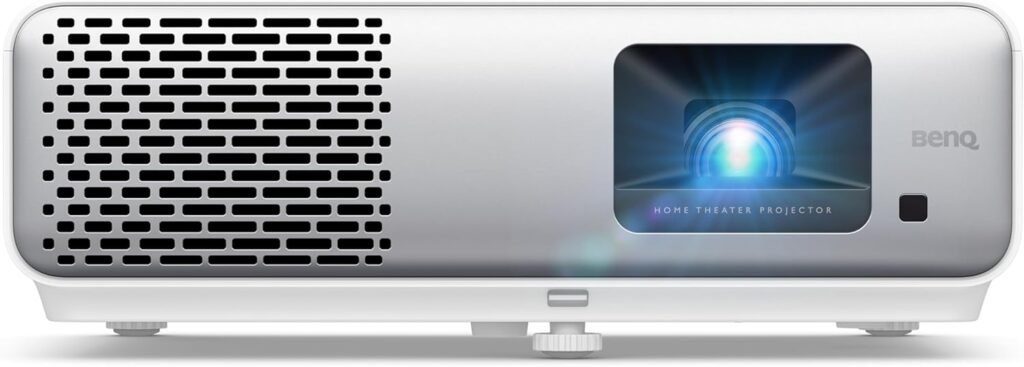
Gaming Performance
For many users, gaming capability is an important consideration, and the HT2060 doesn’t disappoint in this regard. The projector features a dedicated Game mode that reduces input lag to approximately 33 milliseconds. While this isn’t quite as low as the sub-20ms latency found on gaming-focused projectors or modern gaming TVs, it’s more than adequate for casual and console gaming. Most players will find the responsiveness perfectly acceptable for single-player adventures, racing games, and most multiplayer titles.
The Game mode does make some compromises in image quality to achieve lower latency, slightly reducing contrast and color saturation, but the trade-off is generally worthwhile for interactive content. For competitive gamers playing fast-paced titles where every millisecond matters, you might want to consider a projector specifically designed for gaming with even lower input lag, but the vast majority of users will find the HT2060’s gaming performance entirely satisfactory.
The combination of a large projected image and responsive controls creates an immersive gaming experience that’s hard to match on traditional displays. Whether you’re exploring vast open worlds, racing through detailed tracks, or battling through intense action sequences, the HT2060’s 100-inch-plus image adds a level of engagement that smaller screens simply cannot provide.
Lamp Life and Operating Costs
One of the most attractive features of the HT2060 is its exceptional lamp longevity. BenQ rates the lamp life at 4500 hours in Normal mode, 6500 hours in Eco mode, and an impressive 15,000 hours in SmartEco mode. The SmartEco mode intelligently adjusts lamp brightness based on the content being displayed, reducing power consumption and heat output during darker scenes while maintaining full brightness when needed.
For perspective, if you watch an average of three hours of content per day, the lamp could last over 13 years in SmartEco mode before requiring replacement. Even accounting for gradual brightness degradation over time, this is an exceptional lifespan that significantly reduces the total cost of ownership. Replacement lamps typically cost between $150 and $250, so extending lamp life translates directly into substantial savings over the projector’s lifetime.
The SmartEco mode doesn’t just extend lamp life; it also reduces power consumption and heat output, which contributes to a quieter operating experience and lower electricity bills. In real-world use, the SmartEco mode’s dynamic brightness adjustment is subtle and rarely noticeable, making it an easy recommendation for most users.
Audio Capabilities
The HT2060 includes a built-in 10-watt speaker, which is a welcome inclusion for occasional use or temporary setups. The speaker is reasonably clear at moderate volumes and adequate for casual viewing, presentations, or situations where external audio isn’t practical. However, let’s be realistic: no built-in projector speaker can deliver the kind of audio experience that matches the visual scale of a 100-inch projected image.
For any serious home theater application, you’ll want to connect external speakers, a soundbar, or a full surround sound system. The projector includes a 3.5mm audio output jack that allows you to send audio to external speakers or a receiver. Most users will likely connect their source devices directly to an AV receiver and handle audio separately from the projector, which is the preferred configuration for optimal sound quality and flexibility.
Connectivity Options
The connectivity suite on the HT2060 is adequate if not particularly extensive. You’ll find two HDMI 1.4a inputs, which support Full HD content at up to 60Hz. While these aren’t the latest HDMI 2.1 ports with support for 4K at high frame rates, they’re perfectly appropriate for this Full HD projector and will handle any 1080p source with ease. The dual HDMI inputs are convenient, allowing you to connect multiple devices simultaneously without the need for an HDMI switcher.
Additional connectivity includes a USB Type-A port that provides 1.5 amps of power, useful for streaming sticks or other powered accessories, though it cannot be used for media playback. There’s also a 12V trigger output, a VGA input for legacy computer connections, composite video input, an RS-232 port for control system integration, and the previously mentioned 3.5mm audio output.
Notably absent is any wireless connectivity. There’s no built-in Wi-Fi, Bluetooth, or smart TV functionality. The HT2060 is a pure display device that relies entirely on external sources for content. While this keeps the projector’s design simple and focused, it does mean you’ll need to connect streaming devices, Blu-ray players, game consoles, or other sources via HDMI.
Operating Noise and Heat
Fan noise is an inevitable consideration with any projector, as these devices generate considerable heat that must be dissipated. The HT2060 produces approximately 29 decibels in Eco mode and 33 decibels in Normal mode. In practical terms, the fan is audible in a quiet room but not disruptively loud. During action-packed movie scenes with high volume, the fan noise becomes completely imperceptible. However, during quiet dialogue scenes or dramatic pauses, you may notice the gentle whir of the cooling system.
The noise level is fairly typical for projectors in this class and represents a reasonable compromise between cooling efficiency and acoustic performance. Positioning the projector farther from your seating area, such as in a ceiling-mounted configuration, helps minimize noise perception. Some users may find the fan noise noticeable initially but report becoming accustomed to it after a few viewing sessions.
Heat output is well-managed, with warm air exhausting from the vents without causing the projector’s exterior to become uncomfortably hot. Just ensure adequate clearance around the ventilation openings for proper airflow, and avoid placing the projector in enclosed spaces without ventilation.
Menu System and Picture Modes
The HT2060’s on-screen menu system is logically organized and relatively intuitive to navigate. The interface is clean and straightforward, with settings grouped into sensible categories. The included remote makes menu navigation simple, and most users should be able to configure basic settings without consulting the manual.
The projector offers several picture presets optimized for different content types, including Cinema, Game, Sport, and Bright modes. The Cinema mode is well-calibrated out of the box and serves as an excellent starting point for movie watching, with accurate colors and appropriate contrast. The Game mode, as previously mentioned, prioritizes low input lag at the expense of some image quality. Sport mode enhances brightness and color saturation for daytime viewing, while Bright mode maximizes light output for challenging ambient light conditions.
For those who want to fine-tune the image, the HT2060 provides access to color temperature adjustments, gamma settings, and individual RGB color controls. While it doesn’t offer the extensive calibration tools found on professional-grade projectors, there’s enough flexibility here to dial in an image that suits your preferences and viewing environment.
Value Proposition and Final Verdict
The BenQ HT2060 occupies an interesting position in the projector market. It’s not the absolute cheapest option available, nor does it compete with premium home theater projectors costing several thousand dollars. Instead, it targets the sweet spot for consumers who want a genuine home theater experience without making a massive financial commitment.
When evaluating value, several factors elevate the HT2060 above its competition. The combination of good brightness, accurate color reproduction, and exceptionally long lamp life creates a total cost of ownership that’s hard to beat. The projector delivers where it matters most—producing an engaging, enjoyable image that brings movies, sports, and games to life on a truly cinematic scale.
Is it perfect? Certainly not. The contrast ratio, while acceptable, doesn’t reach the levels that serious videophiles might demand. The lack of 4K resolution might disappoint those who’ve embraced Ultra HD content, though at typical viewing distances with screen sizes under 120 inches, the difference is often less significant than you might expect. The fan noise, while not excessive, is audible. The absence of any smart features or wireless connectivity means you’ll need external devices for content streaming.
However, when you consider what the HT2060 does well—bright, colorful images; good gaming performance; excellent lamp longevity; and flexible installation options—it becomes clear that this projector represents excellent value for its intended audience. It’s an ideal choice for first-time projector buyers who want to test the waters without overspending, for casual home theater enthusiasts who prioritize screen size and immersion over absolute reference quality, and for gamers who want a massive display for console gaming without breaking the bank.
The BenQ HT2060 succeeds by focusing on the fundamentals and executing them well. It doesn’t try to be everything to everyone, but for those seeking an affordable entry into home projection, it delivers a compelling experience that can transform your viewing habits and bring the magic of the big screen into your living room.
Final Rating: 4 out of 5 stars – Highly recommended for budget-conscious home theater enthusiasts and anyone looking to make the leap from television to projection without spending a fortune.

The Tech Review is your final destination for all your cool Home Tech Product reviews
Home Tech
Amazon Echo Studio Review: Audiophile-Grade Sound Meets Smart Home Integration
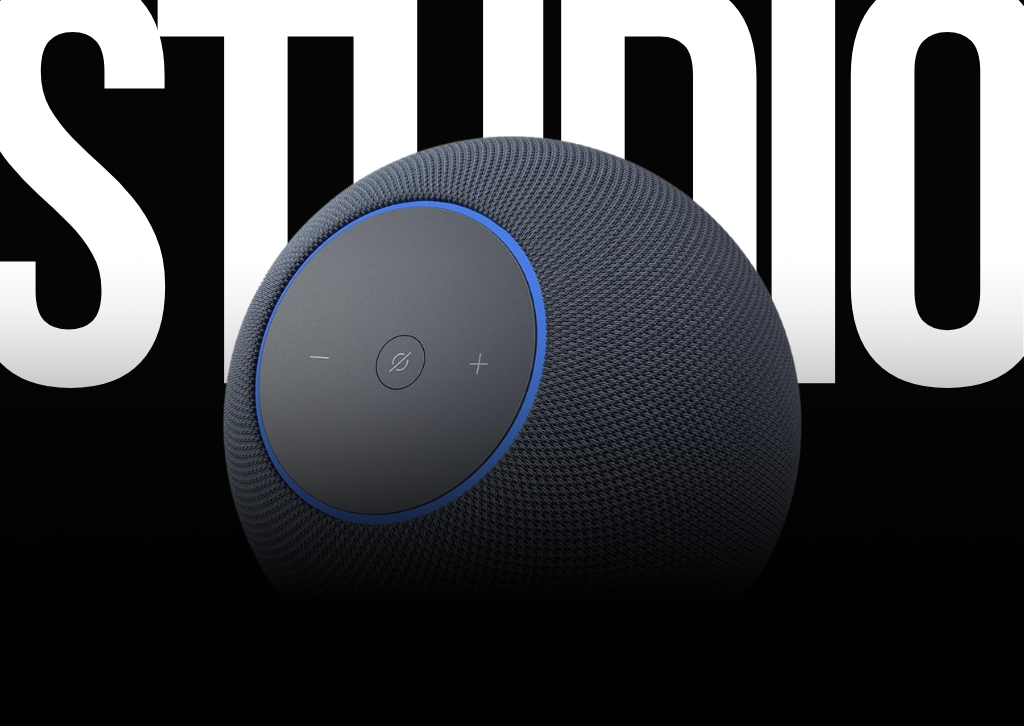
Amazon Echo Studio
Amazon’s Echo lineup has always been about convenience first, sound quality second. The Echo Studio flips that script, delivering a premium audio experience that finally gives serious music lovers a reason to bring Alexa into their listening rooms.
Design and Build Quality
The Echo Studio stands 8.1 inches tall with a distinctive cylindrical form wrapped in fabric mesh. Available in charcoal or glacier white, it’s noticeably larger than the standard Echo but maintains Amazon’s minimalist aesthetic. At 7.7 pounds, this speaker has the heft you’d expect from serious audio hardware.
The top surface features the familiar Alexa controls—volume ring, action button, and microphone mute. Unlike smaller Echo devices that feel like smart speakers, the Studio projects the presence of legitimate audio equipment.
Audio Performance: Where the Studio Shines
Amazon equipped the Echo Studio with five strategically positioned drivers: a 1-inch tweeter, three 2-inch midrange speakers, and a bottom-firing 5.25-inch woofer. This configuration enables true 3D audio playback, supporting Dolby Atmos, Sony 360 Reality Audio, and standard stereo content.
The sound signature impresses immediately. Bass response digs deep without overwhelming the mix, midrange clarity brings vocals forward naturally, and the tweeter handles high frequencies with crisp detail. Room-filling volume comes effortlessly, and the Studio maintains composure even when pushed hard.
The automatic room adaptation technology uses built-in microphones to analyze your space and adjust the EQ accordingly. Testing in both small bedrooms and open-concept living areas showed the Studio adapting intelligently, though manual EQ adjustments through the Alexa app offer further customization.
For immersive audio formats, the Dolby Atmos implementation genuinely creates a sense of height and space that elevates compatible content. Amazon Music HD subscribers get the full benefit here, though the catalog of spatial audio remains limited compared to stereo content.
Smart Features and Integration
As an Echo device, the Studio brings Amazon’s full smart home ecosystem. Voice commands work reliably for music playback, smart home control, information queries, and all standard Alexa functions. Multi-room audio lets you group the Studio with other Echo speakers, though pairing two Studios in stereo requires both speakers and delivers genuinely impressive soundstage width.
The Studio connects via Wi-Fi, Bluetooth, or a 3.5mm/mini optical combo jack. This flexibility means you can use it as a traditional speaker for turntables, computers, or other audio sources when you don’t want voice control.
Integration with Amazon Music, Spotify, Apple Music, and other streaming services works seamlessly. Voice commands for playback feel natural, though power users accustomed to browsing extensive libraries may still prefer app-based control.
Limitations to Consider
At $199.99, the Echo Studio occupies an awkward price point. It’s significantly more expensive than standard Echo speakers but undercuts dedicated bookshelf speakers and amplifier combinations that audiophiles typically prefer. Sound quality justifies the premium over budget smart speakers, but critical listeners might want to audition before committing.
The reliance on Amazon’s ecosystem may deter users invested in competing platforms. While basic functionality works across services, the deepest integration naturally favors Amazon Music subscribers.
Physical controls remain minimal. If you prefer tactile buttons over voice commands, you’ll need to rely on the Alexa app frequently.
The Verdict
The Echo Studio succeeds as a bridge product—too serious about sound quality to be just another smart speaker, but too committed to Alexa integration to compete with pure hi-fi components. For listeners who want genuinely good audio without abandoning smart home convenience, it’s an compelling option.
This speaker makes the most sense for Amazon ecosystem users who care about music quality but don’t want separate components cluttering their space. If you’re streaming from Amazon Music HD, controlling smart home devices with Alexa, and want room-filling sound that actually sounds good, the Echo Studio delivers.
For everyone else, the calculation becomes trickier. Traditional powered speakers in this price range may offer better pure audio performance, while cheaper Echo devices handle smart home duties just fine. The Studio’s appeal lies specifically in doing both jobs well enough that you won’t feel shortchanged on either front.
Rating: 8/10
Pros: Impressive sound quality for a smart speaker, Dolby Atmos support, automatic room calibration, full Alexa integration
Cons: Expensive compared to basic Echo devices, requires ecosystem buy-in for full value, limited physical controls.

Upgrade your lifestyle with the latest and greatest in smart living! 🏡✨ Discover expert reviews, must-have gadgets, and the best home tech products that make everyday life easier. Start exploring now at www.thetechreview.net and find the perfect tech for your home!”
Home Tech
Google’s October 1 Smart Home Revolution: Everything Announced Today
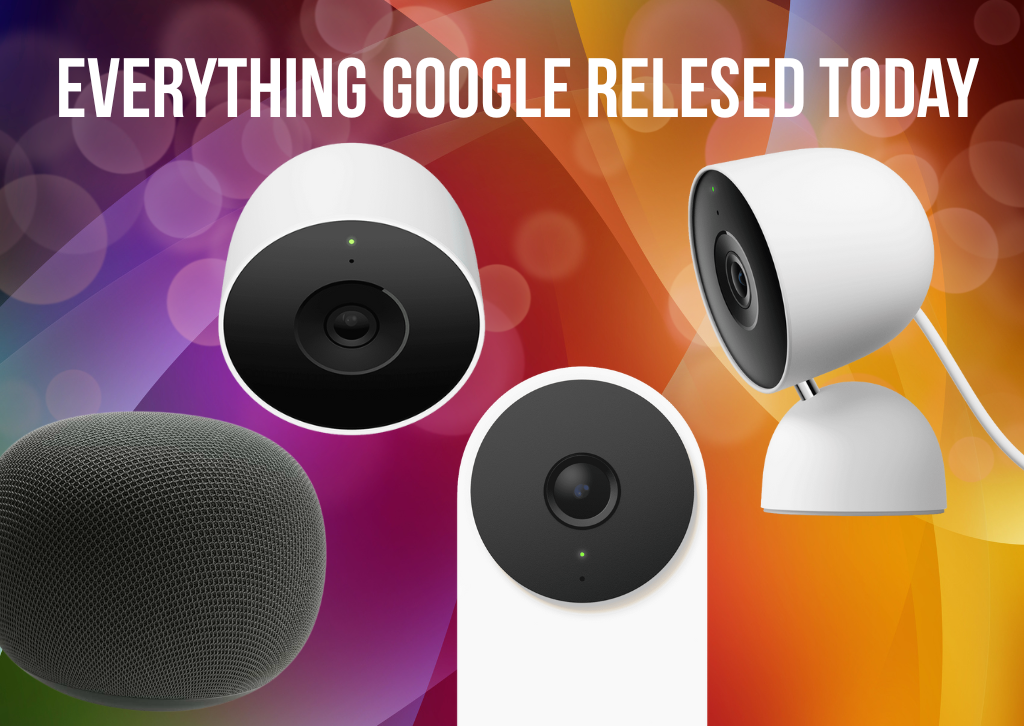
Google Devises
Google has officially launched its most ambitious smart home update in years, introducing Gemini AI across its entire ecosystem alongside new hardware designed specifically for the next generation of home intelligence.
Gemini for Home Arrives
The most significant announcement is Gemini for Home, Google’s AI-powered replacement for Google Assistant on speakers and smart displays. This represents a fundamental shift in how users interact with their smart home devices, moving from rigid voice commands to natural, conversational AI.
What’s New With Gemini for Home
The basic Gemini for Home voice assistant comes free with all compatible devices, maintaining the familiar “Hey Google” wake phrase while delivering dramatically improved capabilities. Users can now speak naturally without memorizing specific command structures, and the AI handles complex, multi-step requests with contextual understanding.
For more advanced features, Google introduced Google Home Premium, a new subscription starting at $10 per month (also included with Google AI Pro and Ultra subscriptions). Premium unlocks:
- • Gemini Live: Fully conversational mode without repeated wake words, enabling natural back-and-forth discussions for everything from meal planning to troubleshooting
- • AI-powered notifications: Detailed alerts that explain what’s actually happening (like “dog jumps out of playpen” instead of just “motion detected”)
- • Home Brief: Daily summaries that condense hours of camera footage into quick, digestible overviews with relevant video clips
- • Ask Home video search: Natural language queries like “What happened to the vase in the living room?” return relevant video clips
- • Automation creation: Set up complex smart home routines using simple voice commands
The rollout begins in late October with early access for existing Google Nest speakers and displays in the United States, Canada, the United Kingdom, Ireland, and Australia.
New Hardware: Built for Gemini
Next-Generation Nest Cameras
Google unveiled three new wired camera products, marking the first refresh of its security lineup in four years:
Nest Cam Indoor (3rd Gen) – $99.99
- • 2K HDR video resolution
- • 152-degree diagonal field of view
- • Available in Snow, Hazel, and Berry
- • Improved low-light performance
Nest Cam Outdoor (2nd Gen) – $149.99 (also available in two-pack for $249)
- • 2K HDR video resolution
- • 152-degree diagonal field of view
- • IP65 weather resistance
- • Available in Snow and Hazel
Nest Doorbell (3rd Gen) – $179.99
- • 2K HDR video resolution
- • 166-degree diagonal field of view with 1:1 aspect ratio
- • Head-to-toe coverage with ground-level package detection
- • Available in Snow, Hazel, and Linen
All three cameras earned first-in-class rankings from DXOMARK for image quality and feature significant hardware upgrades, including wider apertures for better low-light performance and new sensors. The devices have six hours of free event video history (doubled from the previous generation) and built-in intelligent alerts for people, vehicles, animals, and packages.
Google Home Speaker – Coming Spring 2026
Google previewed its new Google Home Speaker, the first audio device engineered specifically for Gemini. Key features include:
- • $99 price point
- • 360-degree balanced audio
- • Dynamic LED light ring showing Gemini’s listening, thinking, and responding states
- • Support for stereo pairing and multi-room grouping
- • Surround sound pairing with Google TV Streamer
- • Available in Porcelain, Hazel, Jade, and Berry
- • Made with recycled materials and 3D-knitted fabric that reduces waste
The speaker launches in Spring 2026 across the United States, Canada, United Kingdom, Ireland, France, Germany, Spain, Italy, Netherlands, Denmark, Norway, Sweden, Finland, Belgium, Switzerland, Austria, Japan, Australia, and New Zealand.
Expanding the Platform: Walmart Partnership
In a significant strategic move, Google announced its first partner devices through a collaboration with Walmart’s onn brand:
Indoor Camera Wired – $22.96 onn Video Doorbell Wired – $49.86
These budget-friendly options work seamlessly in the Google Home app with 1080p resolution, intelligent alerts, and access to Gemini for Home camera features through Google Home Premium. They’re available today at Walmart stores and online.
This partnership marks the beginning of Google’s platform expansion strategy, with the company launching a dedicated program for camera manufacturers. The initiative includes hardware reference designs, recommended components, and a Google Home camera embedded SDK to help partners build AI-powered cameras compatible with the ecosystem.
Sustainability and Design
Environmental responsibility features prominently in today’s announcements. The outdoor camera and doorbell use reformulated resin with UV protection that eliminates the need for paint. All packaging is 100% plastic-free, using recyclable paper and molded fiber. The new Google Home Speaker incorporates recycled materials and features 3D-knitted fabric that significantly reduces manufacturing waste.
Availability
The new Nest cameras and doorbell are available starting today at the Google Store and major retailers across 18 countries including the United States, Canada, Australia, Japan, and most of Europe. Gemini for Home features will begin rolling out to new device owners immediately in select markets, with broader international availability in early 2026.
Existing Google Nest speaker and smart display owners can expect Gemini for Home access through an early access program beginning in late October.
The Bottom Line
Today’s announcements represent Google’s most comprehensive smart home update since the original Google Home launch. By combining advanced AI capabilities with significantly improved hardware and an expanded partner ecosystem, Google is positioning itself to compete more effectively against Amazon’s Alexa and Apple’s HomeKit.
The question now is whether Gemini can deliver on its promise of more reliable, intelligent home automation after years of Google Assistant frustrations. With advanced reasoning capabilities, natural language processing, and genuinely useful AI features like video search and automated summaries, the foundation appears solid. The real test will be whether Google can maintain this momentum and avoid the performance degradation that plagued Assistant.
For smart home enthusiasts who’ve grown frustrated with the limitations of existing voice assistants, today marks the beginning of what could be a genuine transformation in how we interact with connected homes.

Check out all our in-depth home tech reviews
-

 Photography3 months ago
Photography3 months agoSony FE 16mm f/1.8 G Review: The Ultra-Wide Prime for the Modern Creator
-
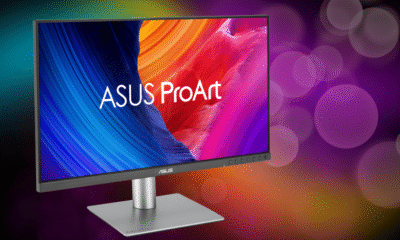
 Computers3 months ago
Computers3 months agoAsus ProArt Display 6K PA32QCV Review: A Visual Feast for Professionals
-

 Tablets5 months ago
Tablets5 months agoClash of the Titans: 13″ iPad Pro M4 vs. Samsung Galaxy Tab S10 Ultra – Which Premium Tablet Reigns Supreme?
-

 Computers4 months ago
Computers4 months agoASUS Zenbook Duo: A Pretty Awesome Dual-Screen Laptop
-

 Photography4 months ago
Photography4 months agoAdobe’s “Project Indigo” is the iPhone Camera App We’ve Been Waiting For, and It’s Awesome
-

 Health Tech3 months ago
Health Tech3 months agoLumen Metabolism Tracker: A Deep Dive into Your Metabolic Health
-

 Photography3 months ago
Photography3 months agoDJI Osmo 360 go: The Next Generation of Immersive Storytelling?
-

 Computers4 months ago
Computers4 months agoApple Mac Studio Review: A Desktop Powerhouse Redefined
-

 Home Tech3 months ago
Home Tech3 months agoRevolution R180 Connect Plus Smart Toaster: More Than Just Toast?
-

 Computers4 months ago
Computers4 months agoSamsung 15.6” Galaxy Book5 360 Copilot AI Laptop: A Deep Dive into the Future of Productivity
-

 Buying Guides4 months ago
Buying Guides4 months agoThe Ultimate Workout Soundtrack: The Best Wireless Headphones for Your Fitness Journey
-

 Photography4 months ago
Photography4 months agoCanon EOS 5D Mark II: A Timeless Workhorse for Discerning Photographers









